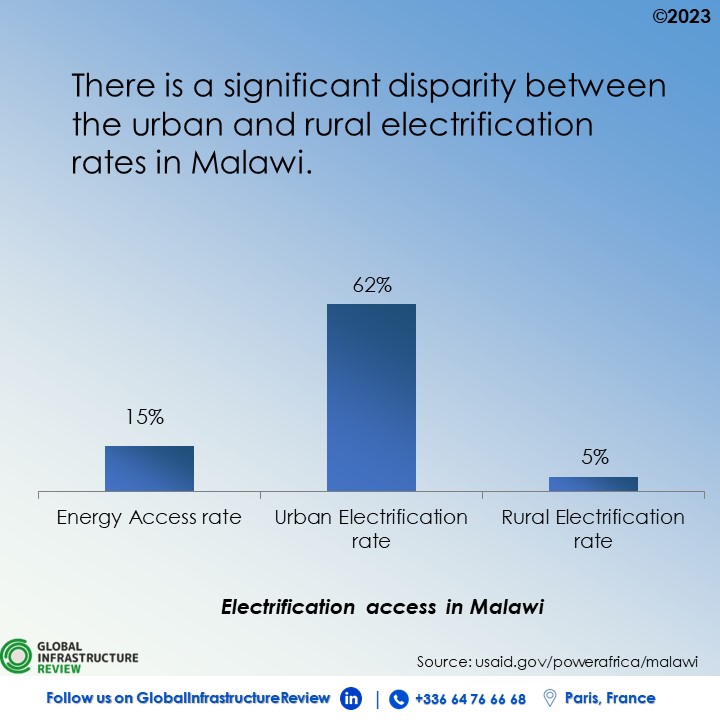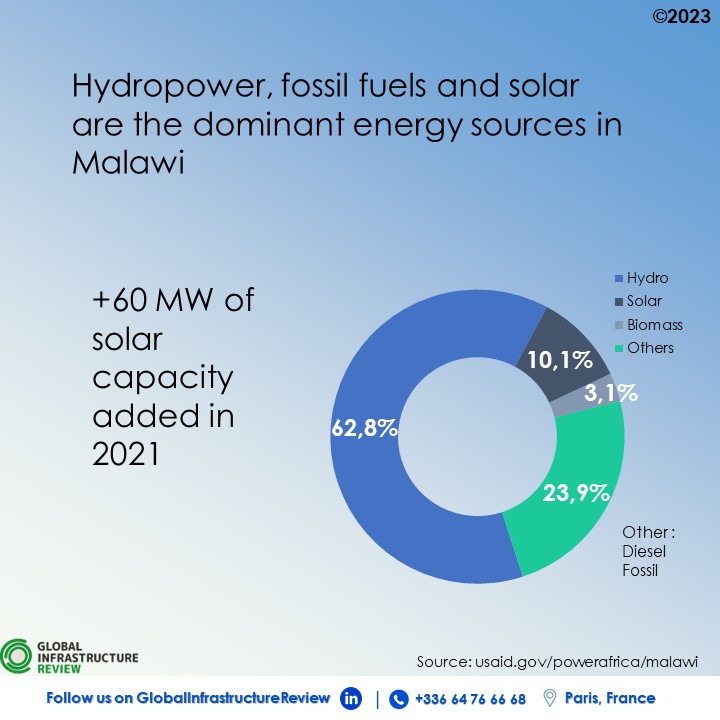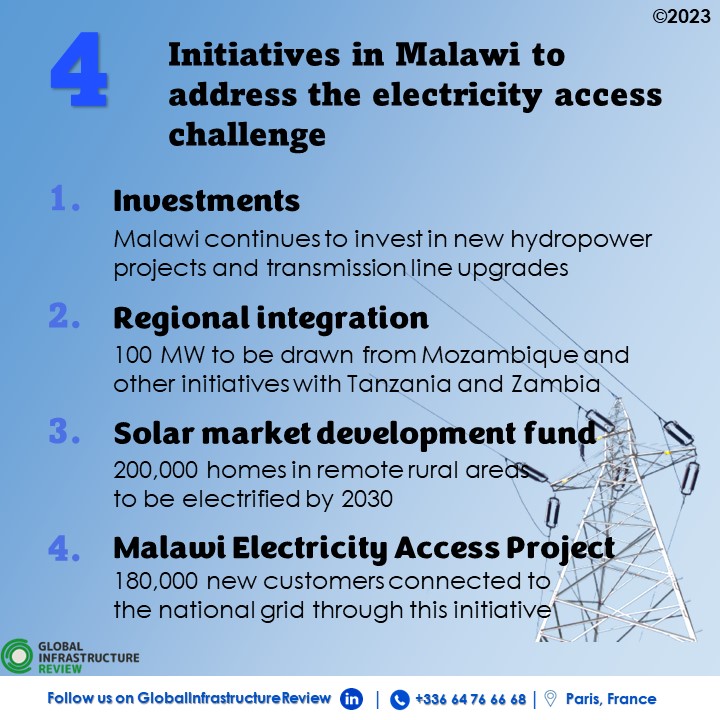Malawi is one of the least electrified countries in the world, with an overall electrification rate of 18% and large disparities between urban (42%) and rural (4%) areas, but also a high dependence on hydropower, which accounts for almost 70% of the energy source.
All hydroelectric plants are located on one river (the Shire River), which is not good for energy security.
However, the Government of Malawi has set an ambitious target of achieving universal access by 2030. To achieve this goal, the annual connection rate must approach 600,000, 10 times the current rate.
In this regard, Malawi needs all possible means to expand access to electricity, including grid diversification and expansion, off-grid solar home systems and mini-grids.

The grid component requires Malawi’s national utility to provide superior delivery to connect households at a much faster rate.
The government considered and put in place several measures in this regard
Malawi has committed, through the national utility company (ESCOM), to reforming programmes to increase the efficiency of procurement and to strengthen the financial capacity of the national utility company to implement access to electricity programmes.
Malawi plans to connect to the Sub-Saharan African regional power pool, whose countries are interconnected by the same rivers or the same green energy sources. This initiative will help the country draw 100 megawatts from Mozambique. Other initiatives with Tanzania and Zambia are under consideration to achieve electricity access as part of regional integration.

The country expects off-grid connection to play a major role in electrification efforts. According to government analysis, by 2030, more than 25% of all connections in Malawi will be provided by off-grid providers. Designed and jointly funded by the World Bank, the Solar Market Development Fund will help to address the challenges of developing the off-grid market in Malawi and electrify 200,000 new households in remote rural areas.
Mini-grids are still in their early stages in Malawi and the country wants to take advantage of freely available natural resources, such as wind and solar, as the prices of other energy sources, such as diesel are escalating. In this regard, the Malawi government has launched a feasibility study for 10% access to electricity.

Malawi estimates that achieving universal access would require at least US$3 billion and the country is currently implementing the US$150 million World Bank-funded MEAP electricity access project, of which Component 1 aims to connect 180,000 customers to the national grid, and Component II to connect off-grid customers.